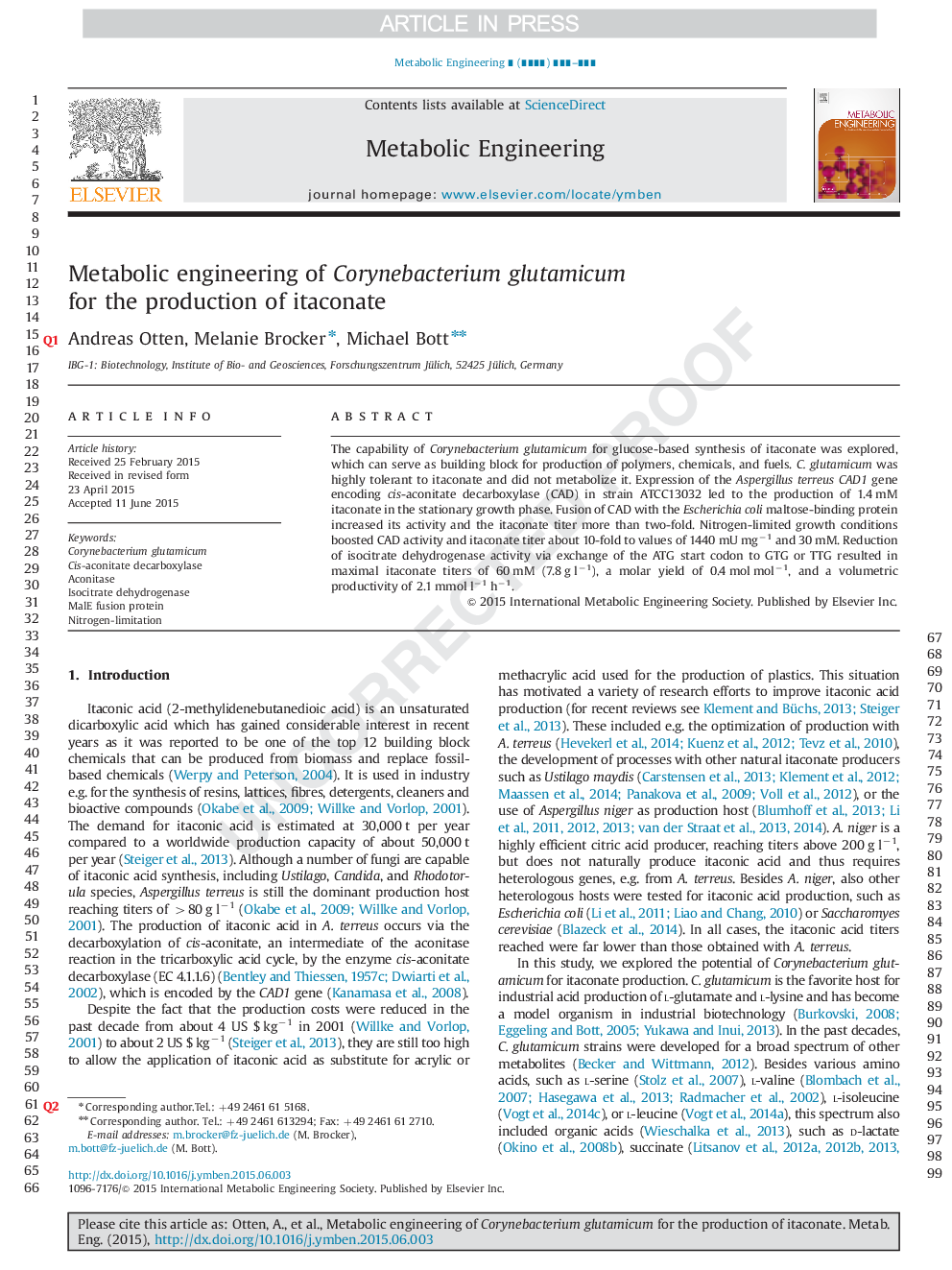| Article ID | Journal | Published Year | Pages | File Type |
|---|---|---|---|---|
| 6494418 | Metabolic Engineering | 2015 | 10 Pages |
Abstract
The capability of Corynebacterium glutamicum for glucose-based synthesis of itaconate was explored, which can serve as building block for production of polymers, chemicals, and fuels. C. glutamicum was highly tolerant to itaconate and did not metabolize it. Expression of the Aspergillus terreus CAD1 gene encoding cis-aconitate decarboxylase (CAD) in strain ATCC13032 led to the production of 1.4 mM itaconate in the stationary growth phase. Fusion of CAD with the Escherichia coli maltose-binding protein increased its activity and the itaconate titer more than two-fold. Nitrogen-limited growth conditions boosted CAD activity and itaconate titer about 10-fold to values of 1440 mU mgâ1 and 30 mM. Reduction of isocitrate dehydrogenase activity via exchange of the ATG start codon to GTG or TTG resulted in maximal itaconate titers of 60 mM (7.8 g lâ1), a molar yield of 0.4 mol molâ1, and a volumetric productivity of 2.1 mmol lâ1 hâ1.
Keywords
Related Topics
Physical Sciences and Engineering
Chemical Engineering
Bioengineering
Authors
Andreas Otten, Melanie Brocker, Michael Bott,
